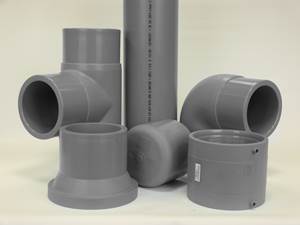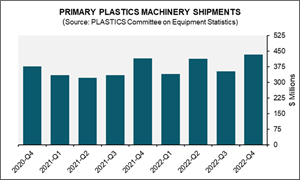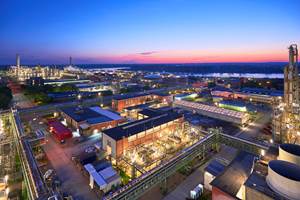Generally Flat Pricing Projected for Volume Resins Heading into 4th Quarter
PET and nylons 6 and 66 could see further downward pricing
As we approach the start of fourth quarter, it appears that prices of nearly all volume resins eroded in various degrees through most of the third quarter. Major drivers include supply outstripping demand, a slowdown in some key markets such as automotive and construction, lower GDP, slowed global demand, and tariff-related issues.
Here’s a look at how our industry colleagues with pricing expertise view things for each of the major commodity volume resins. They include purchasing consultants from Resin Technology, Inc. (RTi), Fort Worth, Texas, senior editors from Houston-based PetroChemWire; and CEO Michael Greenberg of the Plastics Exchange in Chicago.
▪ PE: Prices dropped a total of 6¢/lb generally within the June-July time frame, though there appeared to be some trail-off into August, according to Mike Burns, RTi’s v.p. of PE markets and PCW senior editor David Barry. In the meantime, suppliers moved their July 3¢/lb increase to August and issued a new 4¢/lb increase, effective September 1. Our industry sources characterize these moves as primarily a ‘security’ measure against disruptions from a major weather event and an attempt by suppliers to set a pricing floor, but noted that market fundamentals are not playing toward a cost push.
“Supplier inventories remain at record-high levels—all extra resin is moving to exports which increased from 20% to 35%, nearly on par with new PE capacity brought on stream,” says Burns. These industry sources describe domestic demand as pretty healthy, and anticipate that fourth quarter PE prices may have found a temporary floor. Barry noted that China’s new tariffs scheduled for September 1, included an additional 5% tariff on HDPE and LLDPE, while an additional 10% tariff on LDPE imports were scheduled for December.
Reporting on the PE spot market, the Plastic Exchange’s Greenberg described August as a very active month—the highest since Hurricane Harvey in 2017. “Processors continued to tap the spot market for favorable deals; the market has been very liquid and the savings substantial compared to general contract levels. All HDPE resins and LLDPE film grades were down a full penny as new reactors pump out these commodity resins, but premium LDPE Film was up at least a half cent, with a notable delay in new production. Both LDPE and LLDPE for injection gained a full penny citing supply tightness in these slightly more specialty grades.”
▪ PP: Prices last month rolled over from July, in step with propylene monomer contracts. However, spot monomer prices were moving up and a modest increase of 1-2¢/lb was noted as possible by PCW’s Barry, the Plastics Exchange’s Greenberg and Scott Newell, RTi’s v.p. of PP markets. Newell saw this as tied to a couple of supply blips, including a fire at one of ExxonMobil’s Baytown crackers, expected to have been down through September and Dow’s planned maintenance shutdown of its PDH plant for the month of September.
PCW’s Barry though a modest increase was also possible based on a lot of PP capacity being off-line in Europe which could strengthen exports there and prices. Still, Newell characterized the domestic market as very well-supplied with a lot of material being pushed into secondary markets at heavy discounts. He thinks processors should have a pretty good chance of getting lower contract prices, as suppliers have been jockeying for position as we head into 2020 contract negotiations.
The Plastics Exchange’s Greenberg characterized the PP spot market as extremely active, with August volumes as the highest of the year.
“There was a rush of end of the month offers with stellar pricing attached and processors were ready with orders in hand. The buying ensued and by the end of the week, there was unfilled demand, at least at the special pricing levels…As we enter a seasonally strong period of demand, it will be interesting to see if the apparent upstream resin supply tightness begins to impact spot availability, which has otherwise been quite good.”
▪ PS: Prices dropped 1¢/lb in August in step with benzene contract prices which dropped to $2.54/gal., according to PCW’s Barry and Robin Chesshier, RTi’s v.p. of PE, PS and nylon 6 markets. September benzene contract nominations appear to be for a rollover, and both sources venture PS prices will remain flat.
According to Barry, styrene monomer cost based on a 30/70 formula of spot ethylene/benzene was 29.4¢/lb, compared to 29.7¢/lb in July, and he ventures that PS prices in October could also be flat. Chesshier sees some potential for upward PS pricing next month, noting that October benzene prices tend to move up as refineries switch from summer to winter fuels. She also notes that while historically September has been a peak season for PS demand in appliances domestically and in Asia, this has not been evident so far. Citing ACC data, she notes that domestic PS demand was down 5% through July, and operating rates that same month were less than 65%, year-to-year.
▪ PVC: Prices last month dropped 1¢/lb and were expected to fall by another 1¢/lb in September, essentially nixing out the June 2¢/lb increase, according to both Mark Kallman, RTi’s v.p. of PVC and engineering resins and PCW’s senior editor Donna Todd. Meanwhile, Todd recently reported that OxyVinyls announced a 3¢/lb price hike, effective October 1. She noted that an Oxy representative attributed the move to an aim to recoup the August 1¢/lb decrease and to prevent the September 1¢/lb decrease. No other suppliers appeared to have made a similar move.
Kallman ventured that prices next month would be flat, noting that there are several downward pressures including high supplier inventories, high operating rates, demand dropping by 2% in July as demand remained on the weaker side. In terms of upward pressure, he noted that exports are good but trade tariffs are not likely to let suppliers boost export prices which typically pressure domestic prices up.
▪ PET: Prices were flat last month and dropped 1-2¢/lb at the start of September, now hovering close to the low 50¢/lb, according to PCW senior editor Xavier Cronin. He attributes this to the ‘familiar dynamic’ seen this year of plentiful supply of domestic and imported resins. Moreover, he ventures October PET prices could fall under 50¢/lb to the high-40s for prime PET and mid-40s for off-grade resins. He also ventures that such October price ranges should level off until December when the kick-in of PET’s seasonal consumption slowdown at which point, prices are likely to drop a few cents lower. This assuming there are no supply/demand changes due to plant production disruptions, a sharp drop in imports, or unexpected end-user demand changes.
According to Cronin, in addition to the bloated supply outpacing demand, another downward pressure factor is falling costs for PET feedstocks, including PTA and MEG, especially for buyers pricing off contracts tied to raw material prices as published in monthly indexes. He adds, “The U.S. remains a coveted market for global PET producers and distributors due to typically good payment terms, the actual price paid for PET compared to other countries, dependable logistics. Imported PET is delivered by intermodal, rail and truck in a mostly reliable transportation system.
▪ ABS: Prices eroded through much of third quarter after remaining flat through most of the second and first quarters, according to RTi’s Kallman. Key drivers included a 2% drop in automotive sales for the first half of the year coupled by a continuation of well-priced imports. Based on a very well-supplied market and lower-cost imports, he ventures ABS prices through fourth quarter could remain flat as 2020 contract negotiations take place.
▪ PC: Prices eroded in the first part of the third quarter following flat pricing through much of second quarter, and suppliers’ concessions of 8-10¢/lb in first quarter contract settlements, according to RTi’s Kallman. “We’ve seen a pretty substantial increase in lower-cost imports—up 45% for the first half of 2019—primarily from Southeast Asia, due to tariffs, a double-digit slowdown in automotive in China, and devaluation of the Yen. He ventures PC prices could remain relatively flat through fourth quarter.
▪ Nylon 6: Prices were softer for the last half of second quarter and most of the third after remaining flat through first quarter according to RTi’s Chesshier. Benzene price fluctuations appear to have had no effect on the nylon 6 market because demand has been so off both domestically and globally so far this year driven by a slowdown in automotive as well as carpet fibers and textiles. Imports for nylon 6 were down by 8% and exports were down by 9% through July. Typically, the September-October time frame has been strong in demand domestically and in Asia, but the tariffs and devaluation of the Yen could dampen demand, ventures Chesshier. “If demand moves higher and benzene prices move up, suppliers will have a strong opportunity to increase nylon 6 prices.”
▪ Nylon 66: Prices have been dropping, generally 5% to 10%, starting in late May, and through much of third quarter and may erode further into the fourth, according to RTi’s Kallman. This despite modestly higher raw material costs in third quarter vs. first quarter, but still lower than those in 2018. “Unlike last year, when price hikes were driven by tightness in raw materials, we now have a very well-supplied market. Demand is challenged by a slowdown in automotive demand and lower GDP which impacts the construction market.” The slowdown in automotive for the first half of 2019 is: U.S., down 2%; Europe, down 3.1%, and China, down 12.4%.
Related Content
Borealis and Partners Move Forward with Crosslinked PE and PP Pipes Based on Renewable Feedstock
The company’s partnerships in these new drop-in solutions significantly advances carbon footprint reduction.
Read MorePlastics Machinery Shipments Rose in 2022’s Final Quarter
The Plastics Industry Association’s (PLASTICS) Committee on Equipment Statistics (CES) reported that injection molding and extrusion machinery shipments totaled $432.7 million in Q4.
Read MoreIneos Nitriles Launches Biobased Acrylonitrile
The company’s Invireo is said to deliver a 90% lower carbon footprint compared to conventionally produced acrylonitrile.
Read MoreCompact Entry Rotating-Rack Series of Weather Testers Expanded
Atlas’ Xenotest now also available to meet American standards.
Read MoreRead Next
Why (and What) You Need to Dry
Other than polyolefins, almost every other polymer exhibits some level of polarity and therefore can absorb a certain amount of moisture from the atmosphere. Here’s a look at some of these materials, and what needs to be done to dry them.
Read MoreUnderstanding Melting in Single-Screw Extruders
You can better visualize the melting process by “flipping” the observation point so that the barrel appears to be turning clockwise around a stationary screw.
Read More









.png;maxWidth=300;quality=90)


















